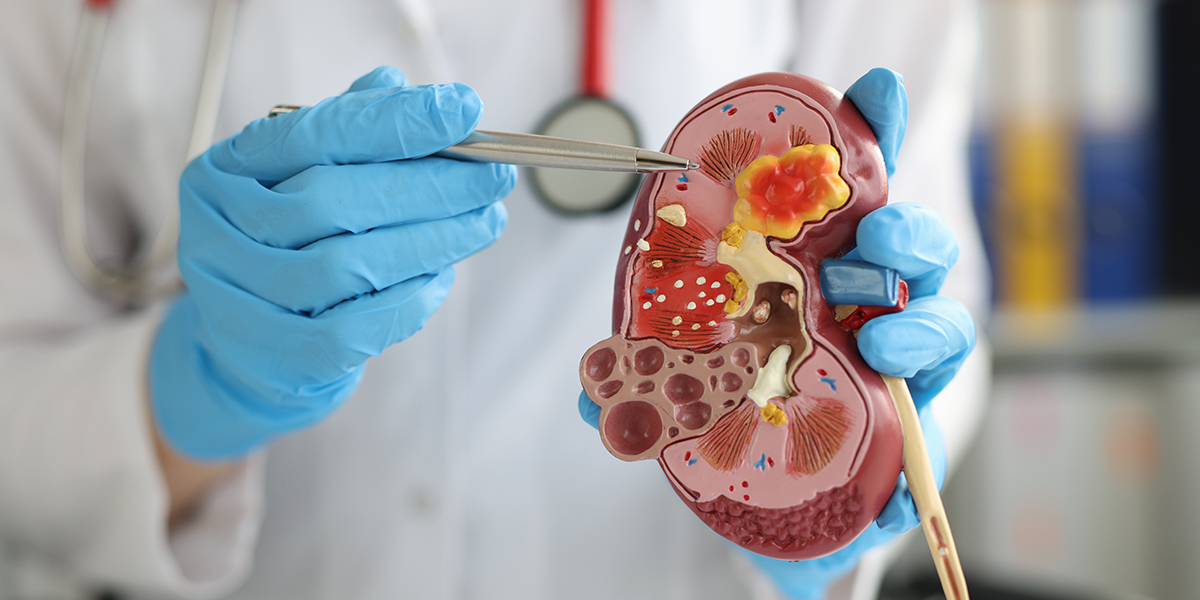
“Good things come in small packages is a well-known saying” Have you heard it before? Unfortunately, when it comes to kidney stones, the opposite seems to be true. These tiny, hard deposits can cause major pain and discomfort when they form in your kidneys and make their way through your urinary tract.
Our kidneys are responsible for filtering waste and excess fluid from our body, which is then excreted as urine. They also regulate the electrolyte level and produce hormones that help control blood pressure and produce red blood cells. Now, imagine your kidneys as a bustling factory where workers (cells) are busy filtering your blood. The factory needs to run efficiently to keep up with the demand, but sometimes things can go awry.
One of the primary factors that can lead to kidney stone formation is an imbalance of minerals and salts in your urine. If there is too much of a certain mineral, like calcium, and not enough liquid to dilute it, crystals can form and eventually grow into a kidney stones. Some of the factors that can contribute to the formation of kidney stones include dehydration, a diet high in sodium and sugar, obesity, certain medical conditions, and genetics.
These hard deposits can form in your kidneys and make their way through your urinary tract, causing pain and discomfort along the way. But just how big can kidney stones actually get? Well, the size of a kidney stone can vary depending on a variety of factors, including its composition and how long it has been growing. In general, kidney stones can range in size from as small as a grain of sand to as large as a golf ball. Smaller kidney stones are more likely to pass through your urinary tract without causing any issues, while larger stones can get stuck and cause pain and discomfort. In some cases, a surgical procedure may be necessary to remove the stone.
Types of Kidneys Stones
But did you know that there are different types of kidney stones? Let’s take a closer look.
- Calcium Stones: These are the most common type of kidney stones and are formed from calcium oxalate or calcium phosphate. They can form when your urine is too acidic, which can be caused by a diet high in salt or sugar, dehydration, or certain medical conditions.
- Struvite Stones: These stones are less common than calcium stones and are formed from magnesium, ammonium, and phosphate. They can form as a result of a urinary tract infection and can grow quickly.
- Uric Acid Stones: These stones are formed from uric acid, which can be caused by a diet high in purines (found in red meat, organ meat, and some fish) or by certain medical conditions. They can be more common in people who have gout.
- Cystine Stones: These stones are rare and are formed from cystine, which is an amino acid. They can form in people who have a genetic condition called cystinuria, which causes their kidneys to excrete too much cystine.
Causes Of Kidney Stones

Kidney stones are a common and painful condition that can affect people of all ages. Despite this, there are several factors that can contribute to the formation of kidney stones, including dehydration, diet, family history, medical conditions, and medications.
Kidney stones may not show symptoms until they move from the kidney to the ureter. Many kidney stones are so small that you may not even know they exist in your body. However, sometimes kidney stones cause increased pain when shaken or passed, which is also one of the acute symptoms of kidney stones.
Treatment for Kidney Stones

Treatment for kidney stones depends on several factors, such as the size of the stone, its structure, and whether it causes pain or obstructs the urinary tract. To know the precise answer to these questions, the doctor will ask you to have some tests like a urine test, blood test, CT scan, or X-ray. Once the test results are precise, the doctor will suggest any of the following options as a course of treatment:
- If the stone is small and you have minor symptoms, the doctor will ask you to wait at least 2-4 weeks for the kidney stone to disappear by drinking excess water.
- The doctor may recommend pain relievers and ask you to let the stone pass.
- The last method is surgery. This is preferred when the pain intensity is too much and a kidney stone infection seems possible. Based on your condition, your doctor might recommend any of the following procedures:
- Shock wave lithotripsy (SWL): This treatment method uses high-energy sound waves to break the stones into small particles, allowing kidney stones to pass through the urine.
- Ureteroscopy: In this method, a thin, flexible tube is inserted through the urethra, bladder, and ureter to reach the stone and break it up with a laser (if it is too large) or remove the stone (if it is small or medium).
- Percutaneous Nephrolithotomy or Percutaneous Nephrolithotripsy: Experts choose this surgical treatment method when other treatments cannot break the stone. In this surgery, surgeons insert a thin tube through the skin to reach the stone and remove it in small pieces. If the kidney stone is big, surgeons prefer open surgery to remove it. In this method, the doctor will make an incision on your side to reach the kidney stone and pull it out through the opening.
The course of treatment varies from individual to individual. Therefore, it is essential to identify the symptoms and consult your doctor before opting for a treatment method. Also, it is vital to know the precautions to take to avoid the recurrence of kidney stones in the future.
